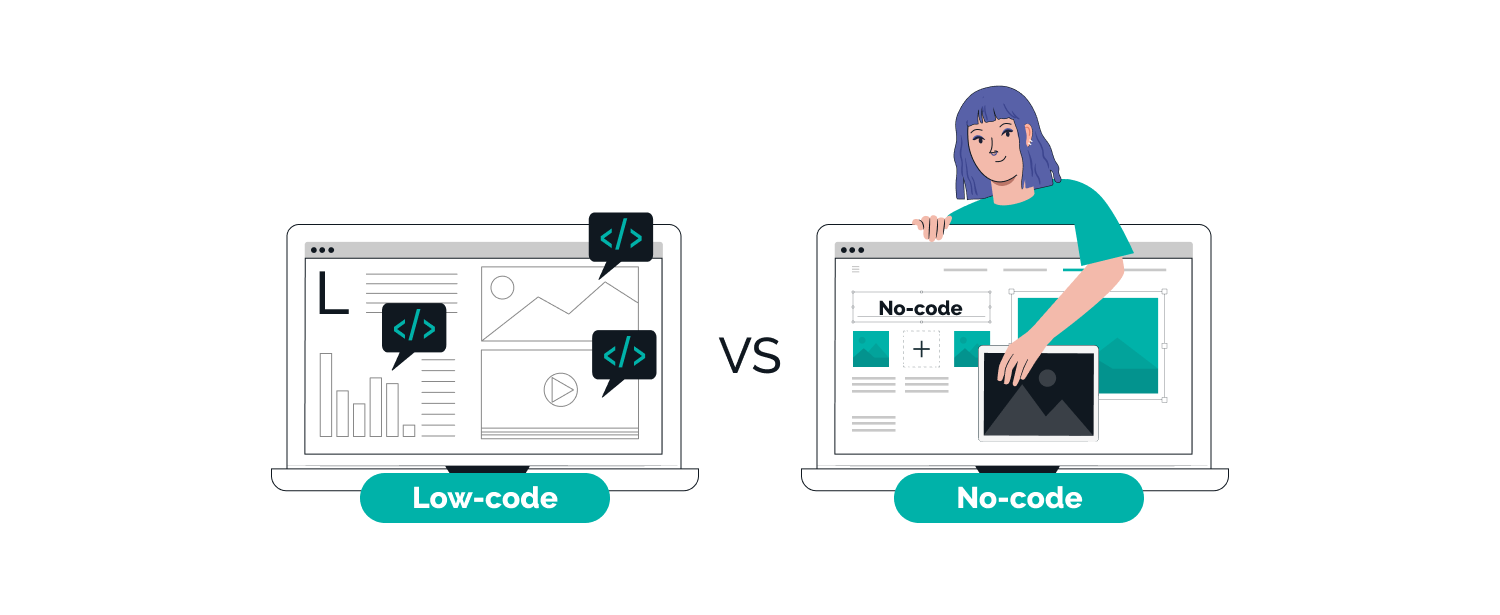Low-code and no-code platforms are revolutionizing the way businesses create applications and workflows. These platforms allow users to build software without the need for extensive coding knowledge. In this article, we will explore the differences between low-code and no-code platforms and what businesses need to know about each of them.
Defining Low-code and No-code Platforms
Low-code and no-code platforms are software development tools that allow users to create applications and workflows with little or no coding knowledge. The primary difference between the two is the level of coding required. Low-code platforms typically require some coding knowledge, while no-code platforms require little to no coding knowledge.
Benefits of Low-code Platforms
Low-code platforms offer several benefits for businesses, including faster development times, lower costs, and scalability. These platforms allow users to create applications and workflows more quickly than traditional development methods, reducing the time to market. Additionally, low-code platforms can lower development costs by reducing the need for developers. With the ability to scale operations more easily, businesses can keep up with changing demands and requirements.
Benefits of No-code Platforms
No-code platforms offer several benefits for businesses, including lower barriers to entry, increased collaboration, and reduced costs. These platforms allow users with little or no coding knowledge to create applications and workflows. This makes it easier for businesses to get started with app development, even if they don’t have a team of developers. No-code platforms also encourage collaboration, as teams can work on projects together. With the ability to reduce development costs, businesses can save money and allocate resources to other areas of the business.
Types of Low-code Platforms
Low-code platforms can be divided into two types – visual and model-driven. Visual low-code platforms allow users to create applications by dragging and dropping visual components onto a canvas. Model-driven low-code platforms use pre-built models and templates to create applications quickly. Businesses should consider the specific features and benefits of each type of low-code platform when selecting a platform.
Types of No-code Platforms
No-code platforms can also be divided into two types – general-purpose and industry-specific. General-purpose no-code platforms are versatile and can be used for a variety of applications. Industry-specific no-code platforms are designed for specific industries or use cases, such as healthcare or finance. Businesses should consider the specific features and benefits of each type of no-code platform when selecting a platform.
Choosing the Right Platform
When choosing between low-code and no-code platforms, businesses need to consider their specific needs and requirements. Some businesses may require the flexibility and customization offered by low-code platforms, while others may prefer the ease of use and lower barriers to entry offered by no-code platforms. Businesses should also consider the availability of third-party integrations, support, and security features when selecting a platform.
Integration with Other Software
Another key consideration when choosing between low-code and no-code platforms is integration with other software. Both types of platforms can integrate with other software, such as lead management software or project management software for B2B Sales. Businesses should consider the integrations available and how they can improve the efficiency and effectiveness of their software development projects.
User Experience
User experience is another important factor to consider when choosing between low-code and no-code platforms. Both types of platforms should provide a user-friendly interface that allows users to create applications and workflows easily. Businesses should consider the ease of use, intuitiveness, and flexibility of each platform to ensure that it meets their specific needs.
Security
Security is a crucial factor to consider when choosing a low-code or no-code platform. Both types of platforms should offer robust security features, such as data encryption and access control. Businesses should also consider the platform’s compliance with regulatory requirements, such as GDPR or HIPAA.
Analytics Tools for Low-code and No-code Platforms
Regardless of which platform businesses choose, analytics tools are crucial for tracking and analyzing the performance of their applications and workflows. Analytics tools can provide valuable insights into user behavior, usage patterns, and other metrics that can help businesses make more informed decisions. Both low-code and no-code platforms have a range of analytics tools available to help businesses measure the success of their software development projects.
Conclusion
In conclusion, low-code and no-code platforms offer businesses a range of benefits, including faster development times, lower costs, increased collaboration, and scalability. When choosing between the two, businesses need to consider their specific needs and requirements. Regardless of which platform they choose, businesses should also invest in analytics tools to measure the success of their software development projects. By leveraging low-code and no-code platforms, businesses can create software more efficiently and stay ahead of the competition. If you are interested in learning more about analytics tools for low-code and no-code platforms, check out the data analysis tools category on ZoftwareHub. ZoftwareHub provides a comprehensive guide to analytics tools, including reviews, comparisons, and pricing information.


